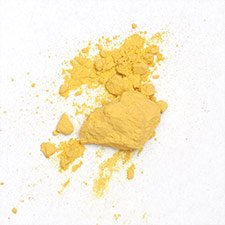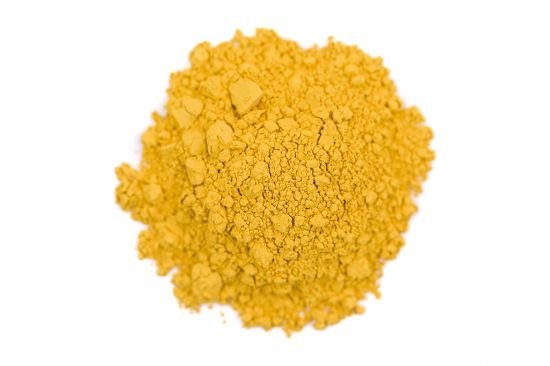A practical yellow with a long history—on palettes from the 14th century to today’s trend cycles.
Lead-Tin Yellow was one of the earliest synthetic pigments used in European painting. Made by heating a mixture of lead oxide and tin dioxide, it was valued for its bright, slightly cool yellow tone and strong opacity. From the 1300s through the 1600s, it appeared consistently in panel paintings, frescoes, and altarpieces, especially in Italian and Northern European workshops.
Sir Anthony van Dyck, Lady Elizabeth Thimbleby and Dorothy, Viscountess Andover, c. 1637
Though largely replaced in the 18th century, Lead-Tin Yellow played a central role in the work of artists including Giotto, Titian, Vermeer, and Raphael. It was often used for drapery, highlights, architectural details, and as a mixing component in flesh tones—anywhere a consistent, lightfast yellow was needed.
Titian, Bacchus and Ariadne, 1523
Johannes Vermeer, The Milkmaid, 1657-58
The pigment was created by firing lead and tin compounds together at high temperatures, a process like that used in glass or ceramic production. Its manufacture was simple enough that it became widely available, and painters appreciated both its intensity and its handling properties, especially in oil paint.
Compared to natural yellows like saffron or weld, which faded easily, Lead-Tin Yellow was more reliable. It was also easier to control than mineral yellows like orpiment, which could be toxic and chemically unstable. For artists in the Renaissance and Baroque periods, this pigment offered a balance of quality, accessibility, and longevity.
Lead-Tin Yellow paint on a canvas.
Lead-Tin Yellow paint under magnification.
Loose Lead-Tin Yellow pigment.
By the mid-1700s, Lead-Tin Yellow had largely disappeared from use. It was gradually replaced by Naples Yellow, and later by synthetic chromates and cadmium-based pigments. As the chemistry of painting materials changed, and as the pigment became less available, it quietly fell out of circulation.
Lead-Tin Yellow from Kremer Pigmente
Naples Yellow from Kremer Pigmente
It wasn’t until the 1940s that scientists using modern analytical tools identified Lead-Tin Yellow as a distinct material. For years, it had been misidentified as other yellows due to overlapping historical terminology like giallolino or massicot. Today, conservators recognize it as a key pigment in early European painting.
From a conservation standpoint, identifying Lead-Tin Yellow can provide helpful context. Because it was only in use during a specific period, its presence in a work of art can support attribution, dating, or reveal later restorations.
In the past year, a pale, pastel yellow often called “butter yellow” has seen a resurgence in design and fashion. It’s a softer, cooler tone than more saturated or mustard yellows, and visually similar to many historic uses of Lead-Tin Yellow in painting.
It appears today in product packaging, home goods, clothing, and graphic design—a trend that mirrors some of the aesthetic decisions artists made in earlier centuries.
While today’s designers aren’t working with toxic materials or oil paints, the appeal of this tone remains consistent: warm, light, and easy to pair with neutrals or blues.
A butter-yellow inspired collage of popular home design and fashion trends.
Lead-Tin Yellow is no longer available to artists today due to its lead content, but it remains a useful and well-studied pigment in the field of conservation. Its re-identification in the 20th century filled an important gap in pigment history, and helped us understand how Renaissance artists built their palettes.
Resources:
https://colourlex.com/paintings/paintings-sorted-by-pigments-used/yellow-pigments/
https://www.essentialvermeer.com/palette/palette_lead-tin_yellow.html
https://www.forbes.com/sites/annahaines/2025/03/31/the-butter-yellow-trend-explained/
https://www.naturalpigments.com/lead-tin-yellow-light-type-i-pigment












